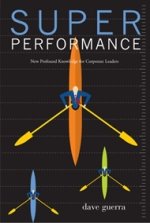"When the manuscript for Out of the Crisis was circulating at MIT over 30 years ago we used to talk about the two hemispheres. Deming would refer to a process and a behavioral side to the thing, to optimization."
Paul Hertz, Ph.D., Deming Colleague
There is a second-order change in dimension when you go from Flatland to Sphereland.
Second order change is change that transforms a system entirely. Second order change is also defined as a critical phase transition. In a critical phase transition as the information, energy, or temperature passing through a system reaches a tipping point, the system experiences a period of perturbation, and then suddenly transformation, it has "escaped" to a new steady state.
It is the same simple experience as falling in love, first one state, then disequilibrium, then suddenly, out of time, a new state, a new "way of being." Same molecules, now transformed.
In the case of Machine View vs Organism View of organization, the change is a symmetry-breaking escape from a self-limiting paradigm of reality. The mechanistic paradigm of organization is giving way, to essentially, a quantum paradigm. The sweet spot of optimization is particle and wave and they go together.
Process and Passion, Tangible and Intangible.
The physics of optimization are quantum physics.




